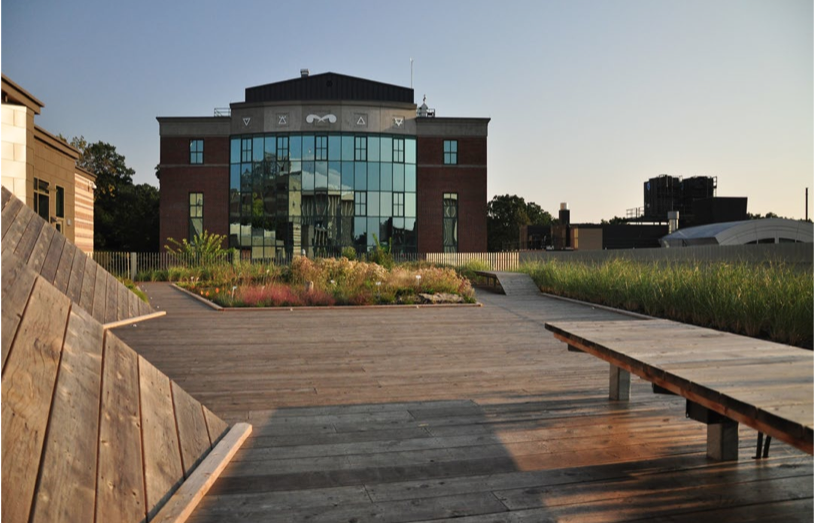 Native Plants Provide Exciting New Potential for Green Roofs
Native Plants Provide Exciting New Potential for Green Roofs

Christian Duvernois Landscape/Gallery draws inspiration from new green roofs emerging – native species and natural ecologies create optimistic data for point-source water retention, sustainable energy development, carbon reduction and organic ventilation.
SUNY ESF, College of Environmental Science and Forestry, located in Syracuse, NY, have combined new design technology with native ecological knowledge to create an innovative green roof.
At the 2013 annual American Society of Landscape Architecture Conference, Darren Damone of Andropogon Associates, Donald Leopold and Timothy Toland from SUNY-EFS jointly presented the new Gateway Center green roof initiative. As the college is an institution that focuses on environmental studies, this new building’s green roof was built to serve as an active learning and research space for students. It was important for them to have a plant palette that was specific to the State of New York; therefore, the typical non-native sedum that most green roofs use would not be incorporated.
Instead, Landscape Architects targeted two botanic zones that surrounded the great lakes located in the northern region of the state of New York. The first was the Alvar, defined by its extremes of flood and drought, lack of soil and large quantities of cracked limestone. The reason this zone was selected lies in the soil composition – it is nearly identical to the fabricated growing medium used in standard roof gardens. As a result, a total of 34 plant species, including goldenrod, juniper, sedge, aster, phlox and wild strawberries, were successfully transplanted to commercial growing medium.
The Dune region, that traverses the Great Lakes, was the second zone of concentration. Only 17 miles of natural dunes surround lake Ontario, providing a rare, harsh environment that sustains plant species adapted to severe wind conditions. Consequently, six species of grasses were used for the rooftop.
After a year of test plots on a neighboring roof, and a first year of successful growth on the new building, comprehensive research is still being done on how these plants perform, but the data seems very optimistic. As these plants are already adapted to such weather extremes as what may occur on a rooftop, there is no need to irrigate or fertilize. The ability to replicate such a project is still a long way off, however, as nurseries do not carry the proper plant material. Nevertheless, this study proves the diverse potential for green roofs as a growing industry.

